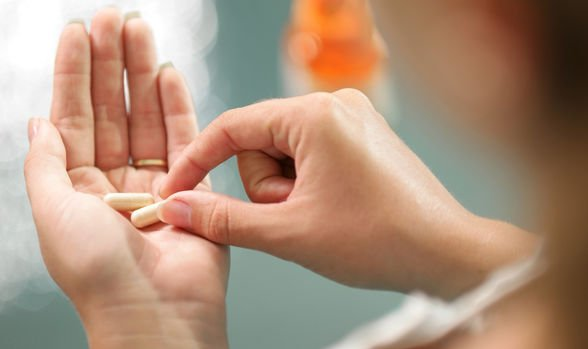- Malaria has long been a major public health problem, killing millions of people every year.
- With the recognition that malaria was caused by the bite of a mosquito, and aided by breakthroughs in diagnostic, treatment, and communication tools, the incidence and mortality associated with malaria has dramatically fallen around the world.
- Management of malaria continues to improve and is attributable to control of the mosquito population, education about protection, and improvements in timely recognition and treatment of disease… there is no vaccine for malaria.
It is a common position taken by vaccination proponents that vaccines deserve all the credit for the worldwide decrease in incidence and mortality from communicable diseases since the early 1900s. Last month, vaccines were credited with saving nearly a half million lives since 1963, in the U.S. alone.1 This popular stance glosses over such contributing factors as management of sewage disposal and the importance of hygienic practices, clean water, and food safety.
No Vaccine for Malaria
Malaria may be the best possible disease to illustrate that factors other than vaccination have been responsible for the dramatic improvement in global health over the last century. To date, there is no commercially available vaccine for malaria, yet mortality and morbidity from the disease have fallen drastically since 2000. Citing the World Health Organization’s (WHO’s) World Malaria Report from December of 2016, the number of new malaria cases fell by 21 percent between 2010 and 2015, and malaria mortality decreased by 29 percent overall and by 31 percent in Africa, where the vast majority of malarial cases occur.2
According to Martin Edlund, co-founder and CEO of the group Malaria No More: “Malaria mortality rates plummeted more than 62 per cent worldwide between 2010 and 2015. More than 6 million lives have been saved since 2000.”3
For the period between 2000 and 2012, it was estimated that the number of deaths from malaria had fallen by 51 percent, resulting in an estimated 3.3 million lives saved, almost all of them children under age five.4
It is hard to consider anything that results in the death of over 300,000 children per year as a success story, but considering that malaria has been said to have “killed more people than any other cause in human history: more than war, famine or any other disease,” the dramatic decline in the number of children saved worldwide is impressive. Since 2010, deaths from malaria fell by 58 percent in the Western Pacific region, 46 percent in Southeast Asia, 37 percent in the Americas, and six percent in the Eastern Mediterranean area. The incidence of malaria dropped to 0 in all 53 countries in the European region.5
Controlling Malaria Without Vaccines
Malaria is a parasitic disease spread via bite from an infected female Anopheles mosquito. Anyone bitten can be infected with malaria but it does not spread from human to human or from animal to human except by direct blood transmission, as from a shared needle or blood transfusion6 Malaria can be caused by different species of the protozoan parasite Plasmodium. Most disease in humans is caused by one of four strains: falciparum (which causes the most severe type,) malariae, ovale, and vivax.7
The first steps toward curbing the spread of malaria came in 1897, when Sir Ronald Ross discovered the role of mosquitos in transmission of the disease. That led to early efforts to reduce larval breeding grounds,8 and an understanding of the need to protect against mosquito bites.
Treatment of malaria with quinine, which is an alkaloid compound of the bark of the chinchona tree, has been used to treat malaria since its discovery in the 17th century.9 Recognition of the therapeutic effects of quinine and “quininisation” was commonly used for prevention and treatment among European settlers in Africa before World War I. Native Africans were thought to be immune to infection but could be asymptomatic carriers of the disease.
Despite side effects of headache, nausea, vomiting and diarrhea and, occasionally hearing and vision loss, use of quinine to treat malaria continued until the 1920s, when synthetic drugs, such as chloroquine, were developed and used widely. In the 1980s, malaria cases resistant to chloroquine emerged, and quinine began to be used again either alone or in combination with antibiotics in some African and Southeast Asian countries, particularly to treat severe cases of malaria.
Malaria Prevention in the 21st Century
Three inexpensive and readily available tools have been instrumental in curbing incidence and death from malaria worldwide.
The first of the modern tools for management of malaria is the rapid diagnostic test, or RDT. This simple device measures for a malaria-specific antigen in the blood and can determine with a high degree of efficiency whether a person with early malaria-like symptoms is actually infected with malaria, allowing for early intervention.10 Prior to the introduction of the RDTs, diagnosis often involved long-distance travel to an appropriately equipped clinic, and dependence on the skills and training of the lab technician and the clinic physician.
More than 200 million RDTs are used annually all over Africa, ensuring timely and appropriate treatment of malaria cases, as well as appropriate therapy for serious diseases that are not found to be malaria.
The second breakthrough in management of malaria are new medications. For treatment of active, uncomplicated malaria caused by the P. falciparum parasite, the WHO recommends a course of artemisinin-based combination therapy (ACTs). There are five different artemisinin agents approved for use by the WHO, depending on the local strain of parasite. Strict warnings are in place concerning artemisinin as single-agent therapy, to try to avoid development of drug resistance.11
A third modern addition to the arsenal against malaria is the mobile phone. With close to a billion mobile phones in Africa alone, public health officials consider the cell phone to be “not only transforming communication and commerce but also how we fight communicable disease,” specifically by connecting health care facilities with patients, combatting the rise in counterfeit drugs, and expanding the reach of health care education.12
Malaria remains a major cause of disease in the world, primarily in sub-Saharan Africa, which is home to 90 percent of the world’s cases and 92 percent of malarial deaths.13 With increased understanding of causes and development of new treatments, however, malaria is both preventable and curable, and its global impact continues to decline… even without vaccination.
References:
1 Sederstrom J. Study Finds Nearly Half a Million Deaths Prevented in the United States by Vaccines. Drug Topics: Voice of the Pharmacist (Modern Medicine Network) Mar. 22, 2017.
2 WHO. Fact Sheet: World Malaria Report 2016. Dec. 13, 2016.
3 Edlund M. Making Malaria No More: 10 Years of Progress and Partnership. Dec. 14, 2016.
4 Edlund M. Halfway to Victory Over Malaria. CNN Dec. 11, 2013.
5 See Footnote 2.
6 CDC. Malaria.
7 WHO. Malaria: International Travel and Health. C. 2017.
8 Snow R, et al. The Changing Limits and Incidence of Malaria in Africa: 1939–2009. PubMed: Adv. Parasitol Dec. 13, 2012.
9 Achan J, Talisuna AO et al. Quinine, an old anti-marlarial drug in a modern world: role in the treatment of malaria. Malar J 2011; 10: 144.
10 Acharya T. RDTs for Malaria Diagnosis: Principle, Results and Advantages. Microbe Online Jan. 23, 2017.
11 Overview of Malaria Treatment. WHO Mar. 18, 2016.
12 See Footnote 4.
13 WHO. Malaria Fact Sheet. December 2016.















One Response
…”Native Africans were thought to be immune to infection but could be asymptomatic carriers of the disease.”
This is interesting to me because I’ve actually done a little research which led me to assume almost the opposite. Do you have any more information regarding this?
I tried doing this odd project several months ago where I tried to fill in some blanks on our family tree by searching female relatives that may have given me a highly “un-mutate-able” genetic trait; the Rh factor.
My parents are both positive & so were my grandparents. It actually worked but it took A LOT of research as there is much speculation & even conspiracy theory surrounding the Rh Negative blood type.
I thought (but could be wrong), that Rh negative people were known to be naturally resistant to Malaria? And Africa’s population (indigenous) is supposedly less than 4% Rh negative.
Maybe it is an additional “resistant” group?
The highest % of Rh negatives are to be found in the French Basque & Ashkenazi Jews (still only around 19% but higher than the worldwide incidence which is 10-15%) & keeping an eye out on how this relates to immunization research is not unwarranted:
Both groups were seen as desirable by Hitler as research subjects for his Immunization program & I had thought that Malaria resistance was a factor in that?
If not, my next thought was that he was interested in a possible different immune response based on blood type. Maybe because so many experimental & commercial vaccines were formulated using Rhesus tissue/serum (the “RH” in Rh factor actually does mean “Rhesus”) & Rh negative is the “anti-rhesus” factor.
When a rh negative person’s blood cells encounter rh positive cells, it can cause a hemolytic reaction. Hemolytic reactions will increase Bilirubin levels & Bilirubin; can cross & damage the blood brain barrier.
I mean; it’s just my own little theory but I do have to wonder what the impact would be, say; for a vaccine such as the Polio vaccine (historically formulated using rhesus renal cells) to be administered 3 times, possibly damaging the BBB & then; Wham. Along comes an Aluminum & Mercury laden MMR & it has a direct access to the brain.
I had heard that Hitler got somewhat fixated about blood types & all military members were required to be tattooed according to type (supposedly to allow for rapid transfusions if wounded in combat) & later this was encouraged for civilians also.
Please do reply if you have any additional info regarding this natural Malaria immunity, I feel like it IS relevant to Immunization research.